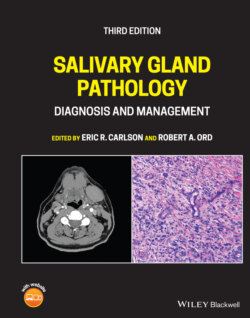Читать книгу Salivary Gland Pathology - Группа авторов - Страница 66
Short tau inversion recovery (STIR)
ОглавлениеShort tau inversion recovery (STIR) is commonly acquired because of its very high sensitivity to fluid and readily detects subtle edema in tissues. When acquired in the conventional method, it also results in nulling the fat signal, thereby further increasing the signal of tissue fluid relative to background. This is the best sequence for edema, particularly when trying to determine bone invasion by tumors. It can also be useful in assessing skull base foramina (Figures 2.11 and 2.12).
Figure 2.9. Axial MRI FSE T2 weighted image demonstrating the high signal of CSF and subcutaneous fat, intermediate signal of the brain and mucosa, and the low signal in the arteries.
Figure 2.10. Axial MRI GRE image.
Figure 2.11. Axial MRI STIR image at the skull base demonstrating the high signal of CSF but suppression of subcutaneous fat signal.
Figure 2.12. Sagittal MRI STIR image at the level of the parotid gland demonstrating the deep lobe seen through the stylomandibular tunnel (arrows). Note the parotid gland extending superiorly to the skull base.
